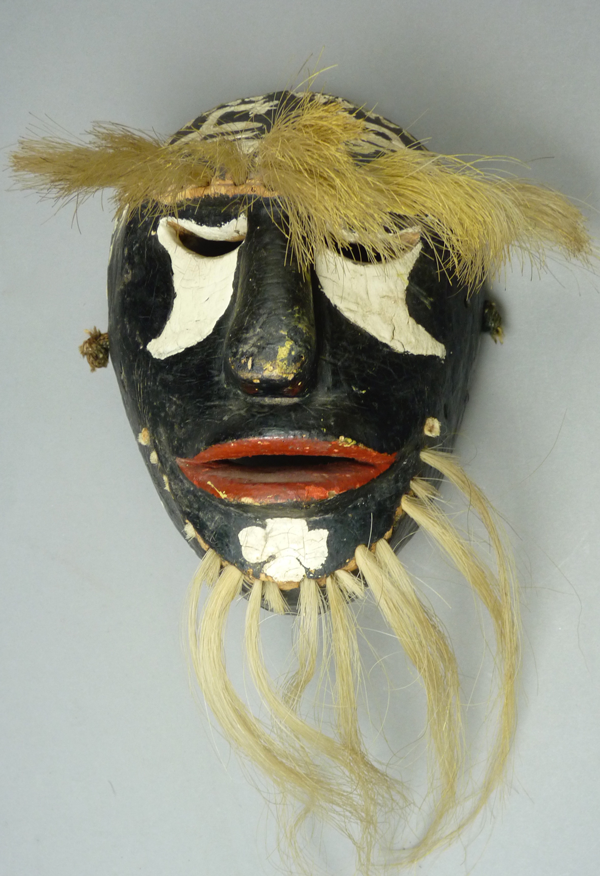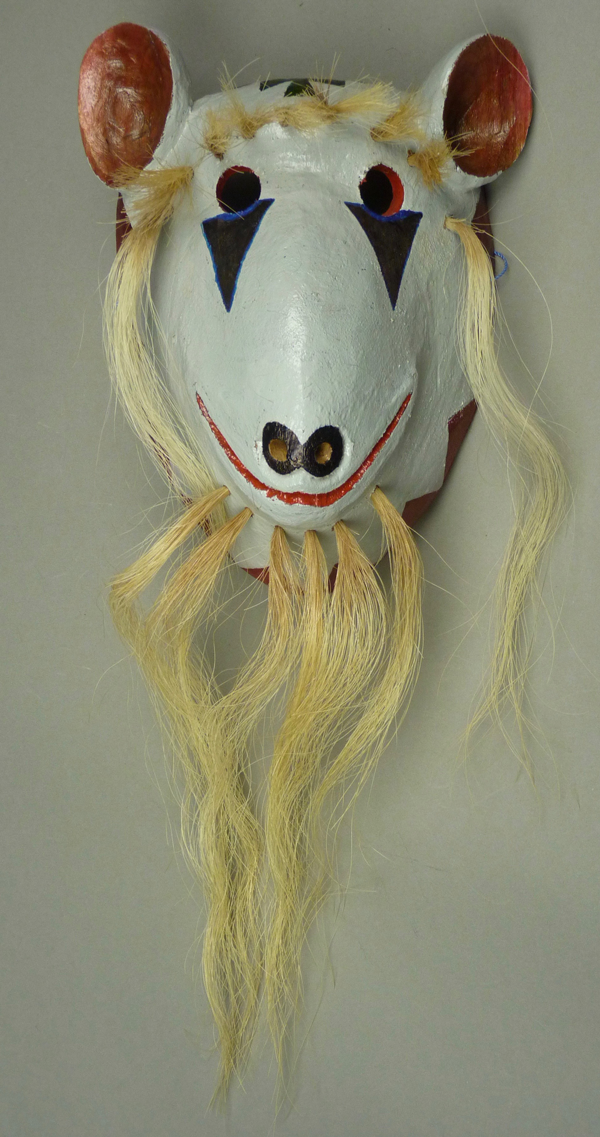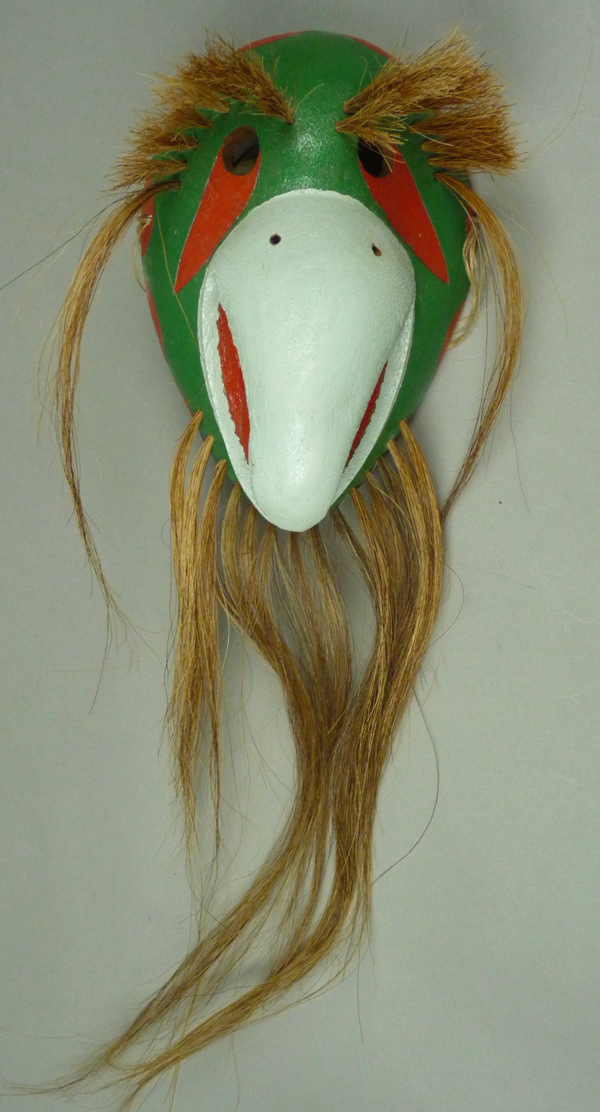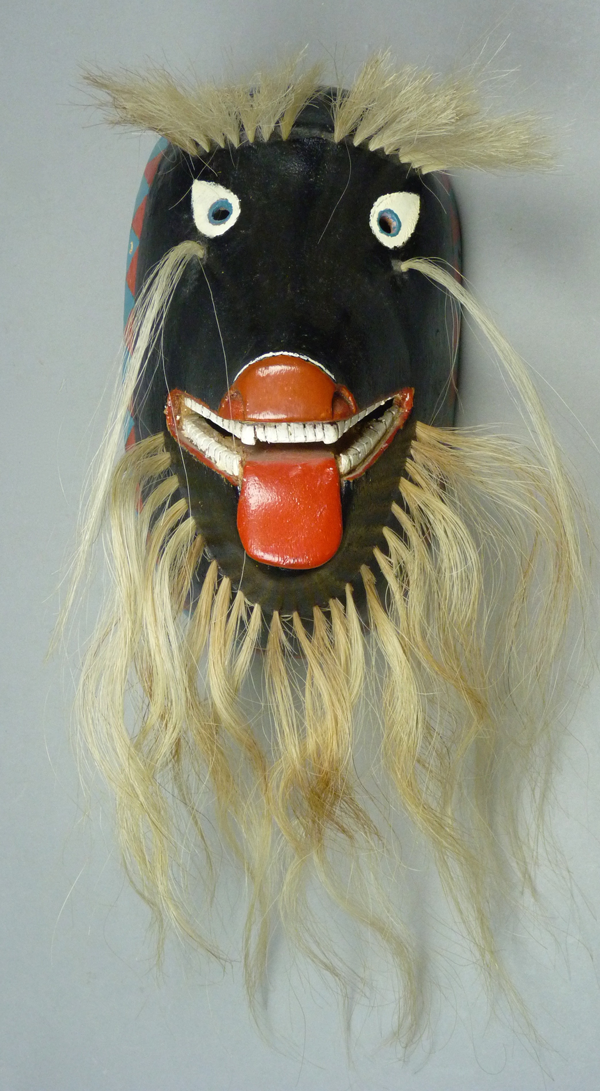As previously noted, I am always interested in identifying the maker of an attractive but anonymous mask. Sometimes the observed features are merely suggestive of a particular hand, while other details seem to contradict that attribution. On further study, incremental clues may accumulate to a point where the identity of a particular mask’s carver becomes suddenly obvious, or this same accumulation may overturn one’s earlier impressions. In today’s post I will discuss four beautiful Yaqui Pascola masks from my collection that have obvious age, remarkable wear, and mystifying features. I imagine that they date to the 1940s or 1950s, but of course I have only limited data to support this impression. Whether you share my obsession about attribution or not, I am sure that you will be charmed by these masks.
I have pestered my friend Tom Kolaz about these masks and their features for more than a decade. Tom’s response seems like a good place to begin. He notes that these masks are old enough to have been repainted, perhaps more than once, and so some of the features that they have in common may reflect the hand of a later painter rather than that of the original carver. Such a situation might mitigate against my hope to identify the carvers. I acknowledge the validity of his perspective. Nevertheless, because these masks are so beautiful, they haunt me. Here is one of them. I bought this mask from Fred Huntington, a Tucson Indian Arts dealer, in about 1995.





